-
 +21 +1
+21 +1Australian University Develops World's First Bionic Eye To Fully Restore Vision In Blind People
Scientists around the world have been conducting research to find a cure for individuals suffering from blindness. Various bionic solutions found so far has not yet been able to help blind individuals on a larger scale.
-
 +24 +1
+24 +1A New Type of Hand Prosthesis Learns From the User, and the User Learns From the Prosthesis
Researchers have developed a new, fully automated prosthetic arm that learns during normal use and adapts to varying conditions.
-
 +21 +1
+21 +1Bionic Eyes Give Sheep Sight, Heading to Humans Next
The BBC reports that a team of Australian researchers gave a small flock of sheep “exceptionally sharp eyesight” — at least for sheep — using bionic eyes surgically implanted behind their retinas. The idea behind the wooly experiment was to make sure the implants didn’t cause undesirable side effects. Now, the team from the University of Sydney and the University of New South Wales say they’ve filed paperwork to start human trials...
-
 +17 +1
+17 +1Bionic eye tech aims to help blind people see
Once upon a time there were some unusual Australian sheep, with exceptionally sharp eyesight. The small flock spent three months last year with bionic, artificial eyes, surgically implanted behind their retinas. These sheep were part of a medical trial that aims to ultimately help people with some types of blindness to be able to see.
-
 +12 +1
+12 +1Revolutionary ‘bionic’ pacemaker capable of reversing heart failure now set for human trials
A potentially game-changing "bionic" pacemaker capable of restoring the human heart's naturally irregular beat is set to undergo trials involving heart patients in New Zealand this year. We may be on the medical precipice of turning back time, or actually reversing the heart rhythm effects of cardiac events.
-
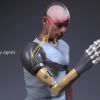 +21 +1
+21 +1Futuristic bionic arm helps amputees feel the sensation of touch and movement
Connecting the bionic limb directly connected to the brain allows for delivery of precise sensations tied to natural movements. Dreaming of a future where Luke Skywalker's replacement hand is more than a sci-fi fantasy, scientists have designed a "bionic arm" that enlists help from tiny robots to re-create the vital sensations forfeited when one loses an upper limb. The bots do that by safely vibrating muscles at the amputation site.
-
 +17 +1
+17 +1Researchers have just created the first bionic eye
Restoring sight to the blind is a mission that has always posed significant problems for scientists. If today operations can help solve part of the problem, many people still suffer from blindness. A solution could however have appeared a few weeks ago, in the very serious journal Nature. Researchers from the Hong Kong University of Science and Technology have just developed a bionic eye, which looks like a human eye. A world first, which if confirmed, could be a real medical revolution.
-
 +18 +1
+18 +1Robotic ‘Third Thumb’ use can alter brain representation of the hand
The team trained people to use a robotic extra thumb and found they could effectively carry out dextrous tasks, like building a tower of blocks, with one hand (now with two thumbs). The researchers report in the journal Science Robotics that participants trained to use the thumb also increasingly felt like it was a part of their body.
-
 +19 +1
+19 +1Bionic gloves help keep the music playing for Brazilian pianist
Acclaimed Brazilian pianist João Carlos Martins had not played with 10 fingers since he lost the use of his right hand in a 1995 mugging in Bulgaria. But today he has returned to play his favorite Bach sonatas thanks to “bionic gloves” invented by industrial designer Ubiratan Bizarro.
-
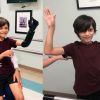 +12 +1
+12 +1Crawfordville boy gets bionic arm thanks to community donations
Back in June, WCTV told you about a 10-year-old named Aidan, who was attempting to raise money in order to get a bionic arm. On Wednesday, he was officially fitted with one.
-
 +20 +1
+20 +1A smart artificial hand for amputees merges user and robotic control
EPFL scientists are developing new approaches for improved control of robotic hands – in particular for amputees – that combines individual finger control and automation for improved grasping and manipulation. This interdisciplinary proof-of-concept between neuroengineering and robotics was successfully tested on three amputees and seven healthy subjects. The results are published in today’s issue of Nature Machine Intelligence.
-
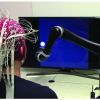 +25 +1
+25 +1First-ever successful mind-controlled robotic arm without brain implants
A team of researchers from Carnegie Mellon University, in collaboration with the University of Minnesota, has made a breakthrough in the field of noninvasive robotic device control. Using a noninvasive brain-computer interface (BCI), researchers have developed the first-ever successful mind-controlled robotic arm exhibiting the ability to continuously track and follow a computer cursor.
-
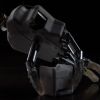 +5 +1
+5 +1A robotic hand that gives sixth sense back to users
We know all know about the five senses, but our ability to move through the world is highly dependent on an often overlooked sixth sense. It's called proprioception, and it's our brain's ability to know where our limbs are in space without visual cues.
-
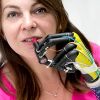 +19 +1
+19 +1Bionic Hands Let Amputees Feel and Grip
If you’re sitting near a coffee mug, pick it up, and note how easy it is to do without really looking. You feel the curvature of the handle, the width of the cup, the slipperiness of the ceramic. Your hand glides into place and you squeeze, getting a sense of the weight, and bring the cup to your mouth. Now, imagine trying to do that with a robotic hand that gives you no sensory feedback. You get no information about the tiny adjustments that your fingers must make in order to grasp it properly. It feels more like operating a joystick than a hand.
-
 +13 +1
+13 +1Being bionic: how technology transformed my life
I was born with the usual set of limbs. When I was nine months old, I contracted meningococcal septicaemia, a dangerous infection of the blood, which very nearly killed me. I survived, but because I had sustained major tissue damage, it became necessary to amputate my right leg below the knee, all of the fingers on my left hand and the second and third digits on my right hand. I learned to walk on a prosthetic leg at the age of 14 months, and have gone through my life wearing a succession of artificial limbs.
-
 +3 +1
+3 +1Man born without penis has 10-day erection following bionic phallus implant
Doctors created the bionic penis using skin from Wardle’s arm and nerves from his legs before attaching it during a 10-hour procedure in June, according The Sun. Wardle suffered through a painful, 10-day erection following the surgery and was told he had to wait six weeks before having sex -- something he’d never been able to do prior to the procedure.
-
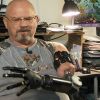 +16 +1
+16 +1Florida man tests world's first fully mind-controlled artificial arm
Johnny Metheny sits at an electric piano in his Port Richey home self-teaching himself the song Amazing Grace. Johnny’s never played before, but he’s determined to master the song. He plays through fairly well with his right hand. "That side I got down pretty good,” said Metheny. Then he raises his left hand to the keyboard, the hand he’s only known for a few short months, and that he never thought he’d be raising. The world’s first fully mind controlled artificial arm.
-
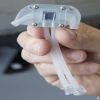 +11 +1
+11 +1By 2019, the first bionic kidney will discard the need for dialysis
Not always natural remedies are good for every health condition, no matter how good they are. Sometimes when the condition at kidney patients is serious, the only medical technology that can help is the dialysis. Without dialysis, patients may not survive, and what makes it even more difficult for those patients is the fact that there is always a long waiting list for transplantation. So far, there was no solution to this disease than getting a new kidney through transplantation.
-
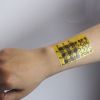 +16 +1
+16 +1Self-healing, recyclable electronic skin creates a way for prosthetic limbs to feel just like real skin does
Biomedicine just took another leap forward. University of Colorado Boulder scientists created so-called electronic skin—e-skin for short. The e-skin is a thin, semi-transparent material that can act like your skin through measuring temperature, pressure, humidity and air flow. The new material, which was detailed in a study published Friday in Science Advances, could make better prosthetics, improve the safety of robots in the future and aid development of other biomedical devices.
-
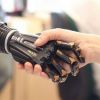 +22 +1
+22 +1The amazing bionic prosthetics that are changing lives and shaping our future
By the end of the First World War, there was no shortage of amputees. Of the seven million British soldiers deployed, 41,000 had amputations in field hospitals or medical facilities behind the lines. Prosthetic limbs had existed for hundreds of years before the War, but the sudden influx overwhelmed medical services on all sides. And even with the return to rudimentary mobility offered by a prosthetic leg, one thing remained with amputee veterans: shame.
Submit a link
Start a discussion




















